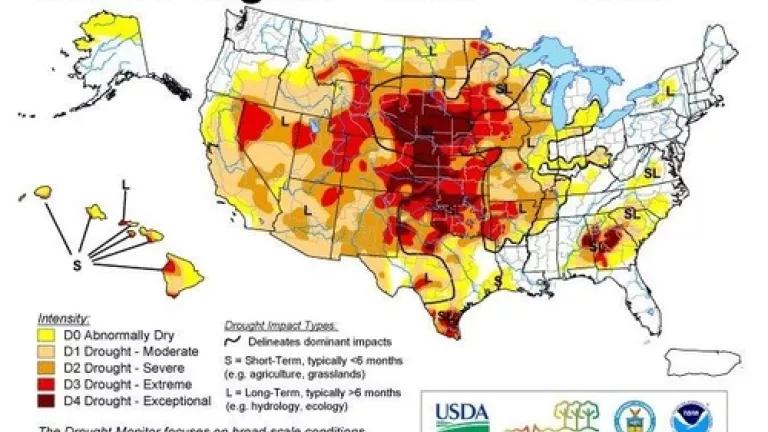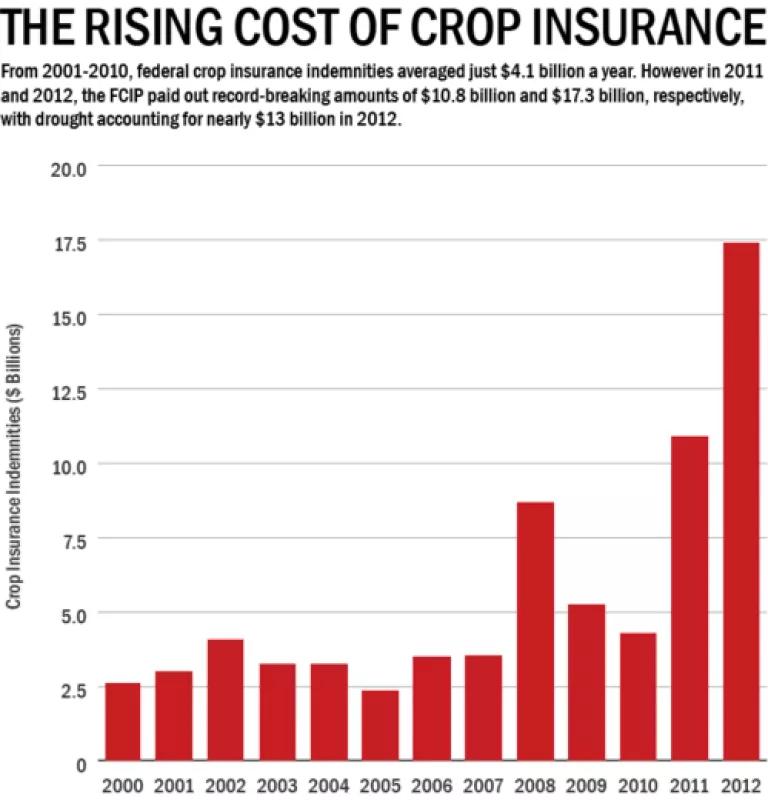The future of our food system depends on healthy soils--and policies that support soil stewardship

Healthy soils are the foundation of a healthy food system. These soils teem with life: earthworms create water channels as the burrow through the soil, allowing rain to soak in; residues from previous crops help soil retain moisture, suppress weeds, and prevent erosion and runoff; microorganisms help filter contaminates and form the glue that helps keep soil intact; and cover crops—second crops planted to protect and improve soil health during the off-season—deliver natural fertilizer to the soil, prevent erosion, increase biodiversity, and improve water filtration as their roots create pores in the soil. Together, all of this works to create healthier crops.
Healthy soils also help farmers become more resilient to extreme weather. When farming practices degrade soil health, farmers often turn to chemically-intensive inputs like pesticides, artificial fertilizers, and increased irrigation to replace the weed-suppressing, nutrient-providing, and moisture maintaining qualities healthy soil naturally provides. This can lead to damaging health and environmental outcomes.
Unfortunately, too much of our valuable soil has become degraded and therefore more vulnerable to extreme weather like droughts and floods. A major wakeup hit in 2012 when record droughts plagued farmers in regions like the Upper Midwest and Great Plains—places we count on for so much of our agricultural production:

Fortunately, there are solutions. It turns out that healthy soil—boosted by water-smart practices such as conservation tillage, cover cropping, crop diversification, and more efficient irrigation scheduling—is one of the best risk management tools available to farmers. It’s also one of the best resources we have for creating a more sustainable food system.
But don’t take it from me. Here’s NRDC’s 2012 Growing Green Award winner Gabe Brown talking about the importance of soil health. (Also check out Gabe’s special OnEarth.org column here, on how he turned barren rangeland into a vibrant fertile farm, proving that soil really does matter):
As Gabe says, soil health is one of the most misunderstood and one of the least appreciated of our resources:
“In production agriculture today, we’ve just accepted a degraded resource…and we’ve failed to address that. So it’s up to us to regenerate that, build that soil health back, and get it to a sustainable state. You have to ask yourself, are you solving a problem or just treating a symptom? So often the production model that’s used today in agriculture, all it’s about is treating symptoms. Instead, they should be addressing the real problem, which is poor soil health.”
On his own farm, which I’ve written about here, Gabe has eliminated the use of synthetic fertilizers on his long-term no–till soil. As he describes in the video, through a variety of practices—all focused on soil stewardship—Gabe has been able to regenerate his soil to the point that it’s sustainable and produces the nutrients his crops need to thrive.
In this model, healthy soils are the underpinning—the key “infrastructure”—of a food system that is not only more resilient to extreme weather events, but also healthier for us and the planet.
Gabe explains how healthy soils lead to a healthy environment and healthy crops:
“Nature takes care of it. When you have a healthy ecosystem you don’t need to supply those types of inputs to treat a symptom, because you’ve solved the basic problems, which is poor soil health. And if we can improve soil health to the point that these nutrients can be transferred and supplied to the plants, they’re going to be in the foodstuffs that we produce. Everything is tied together.”
Unfortunately, our policies continue to lag behind. Today, programs like FCIP are sending the wrong signals to farmers by completely ignoring the risk-reducing value of healthy soil. In fact, by undercharging high-risk farmers compared to their low-risk peers, FCIP actually tends to encourage farmers to make riskier choices that make them more vulnerable to drought and other extreme weather, such as expanding production to areas that are not well suited to growing crops, planting the same high-priced crops (like corn) year-after-year, or using methods that may increase short-term profits but degrade soil health and productivity over time.
A new NRDC report, released today, shows how much of the farm losses of experienced in 2012 could have been prevented using water-smart strategies and best management practices that focus on soil health and more sustainable food production. It also underscores how the FCIP can begin empowering farmers to do just that.
The report outlines a new crop insurance blueprint that would offer reduced premium rates to farmers who adopt proven soil-building management practices that sustain productive crop yields and result in greater water infiltration, less farm runoff and reduced flooding. This more holistic view of risk management would be good for farmers, good for taxpayers, and good for the environment.
If you think this is a good idea, you can tell USDA that it has the opportunity to empower farmers to begin to climate-proof their fields through proven methods of soil stewardship and recognize the value of soil health as a risk management tool when setting the price of farmers’ insurance policies.
We have a role to play as consumers as well. A great place to start is your local farmers market, where you can meet nearby farmers and learn about the practices being used on their farms and why.
As Gabe says:
“I think it really has to be driven by the consumer. The farmers and ranchers, they have to make a living...If society as a whole says to the farmers and ranchers: we need to address this, we need to look at the nutrient density of our foodstuffs and how it’s produced, we need to focus on the quality and health of our soil, that in turn will tie everything together and we can really use food for what it was intended, and that’s human nutrition.”
It’s time for our agricultural policies to catch up. The future of our food system depends on it.
